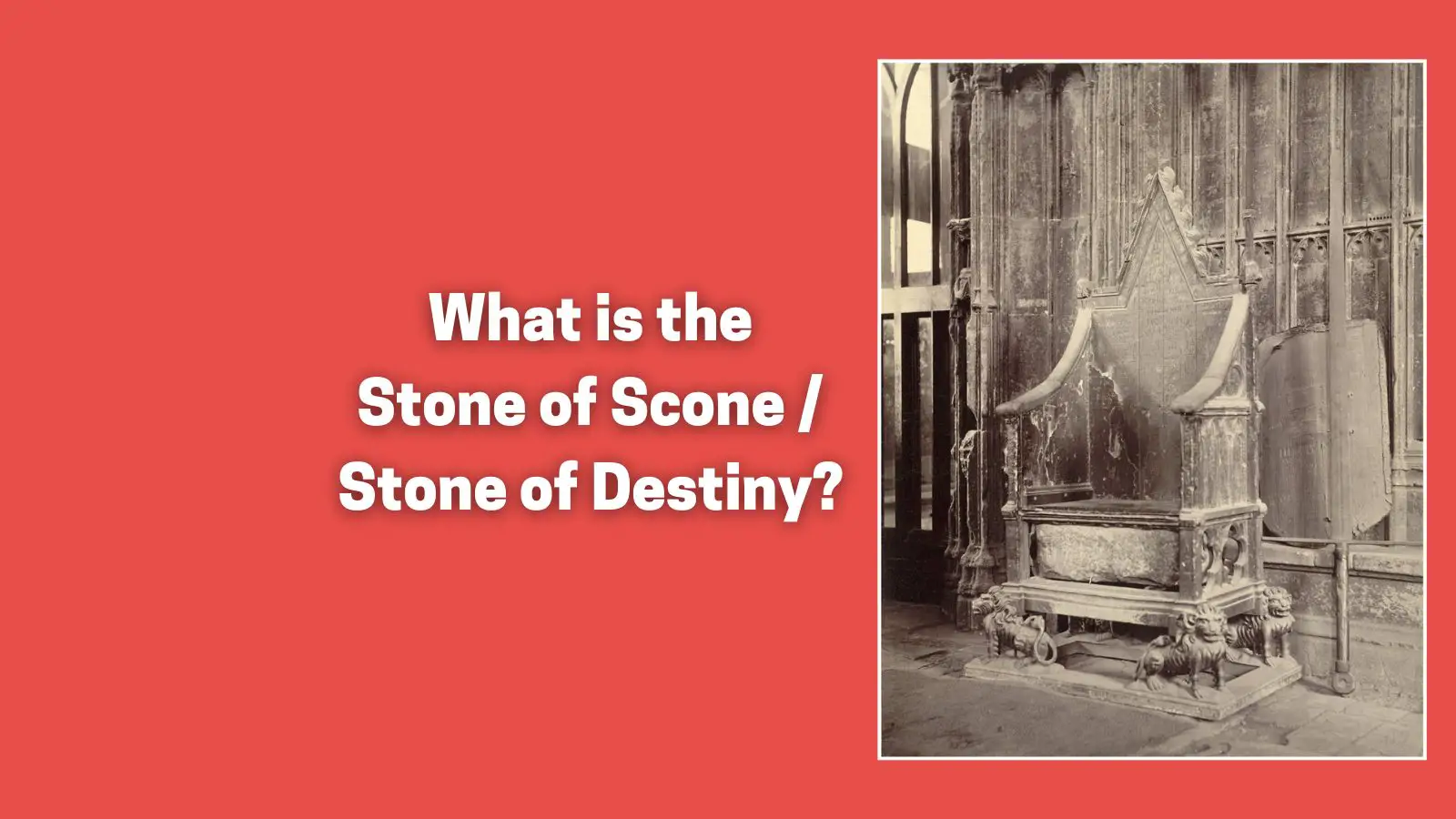What is the Stone of Scone / Stone of Destiny?
nyone familiar with the story of The Sword in the Stone: The Legend of King Arthur will appreciate the time-honoured association between stone and kingdom.
Lia Fail is Gaelic for Stone of Destiny, known also as Stone of Scone, Jacob’s Pillow Stone, the Tanist Stone, and clach-na-cinneamhain in Scottish Gaelic. The Stone was the coronation stone of the Kings of the Scots for hundreds of years. From around 841 AD, the Stone called Scone Abbey home, ensconced in the Scottish village of Scone near Perth. Until the English invasion of Scotland in 1296, when Edward I removed the Stone of Scone to England from the place that gave it its name.
What does the Stone of Scone look like?
The stone of pale-yellow sandstone decorated with a simple Latin cross measures 26 inches (66 cm) by 16 inches (41 cm) by 11 inches (28 cm) and weighs 336 pounds (152 kg). It was returned to Scotland in 1996, to Edinburgh Castle, having been used all the years in the coronation of the monarchs of England and Great Britain and then the United Kingdom after the Treaty of Union of 1707.
Legends associated with the Stone of Scone?
Celtic legend has it that the patriarch Jacob had used the stone as a pillow at Bethel when he had his visions of angels. The heavy stone journeyed, so the legend goes, from the Holy Land to Egypt, Sicily, Spain, and finally Ireland circa 700 BC. Here it took its place on the hill of Tara, the crowning place of the ancient kings of Ireland. It landed up in the possession of the Celtic Scots when they occupied Scotland before it headed off to the village of Scone with Kenneth MacAlpin in or around 840 CE.
The Scone saw itself encased in the seat of a royal coronation chair once it was entrenched in Scone. Before the invasion of Scotland by Edward I of England that saw the stone moved to London, John de Balliol was the last Scottish king to be crowned on it four years before in 1292. Edward I built a special throne at Westminster Abbey in 1307, known as the Coronation Chair. The Stone of Scone was perfectly fitted under the Coronation Chair, symbolising the kings of England thenceforth also being crowned as kings of Scotland.
A piece of metal is believed to have been fastened to the stone bearing a prophecy going back to ancient times, that Sir Walter Scott translated as:
Unless the fates be faulty grownAnd prophet’s voice be vainWhere’er is found this sacred stoneThe Scottish race shall reign.
The legend was said to be fulfilled when Queen Elizabeth I died without an heir in 1603, leading to King James VI of Scotland becoming King James I of England. He was crowned on the Stone of Scone, lending credence to the legend by ruling as a Scotsman where the Stone of Scone was.
The stealing of the Stone of Scone in 1950
Ian Hamilton, Gavin Vernon, Kay Matheson, and Alan Stuart were all students at the University of Glasgow in 1950, as well as members of the Scottish Covenant Association, a group that supported home rule for Scotland. On Christmas Day of that year, these young students took the stone back to Scotland after removing it clandestinely from Westminster Abbey in London.
While removing the Stone from under the Coronation Chair, it fell and broke in two. The students got away with both pieces, which they hid before returning to Scotland without it. The alarm was raised, leading to the border between Scotland and England being closed for the first time in four hundred years. After a fortnight, the thieves recovered the two pieces and took them to Glasgow where they hired a stonemason to make the repairs. Bailie Robert Gray, the stonemason, placed a brass rod inside the Stone into which a piece of paper was inserted. It remains unknown what was written on this piece of paper.
The police found the stone in April 1951 on the site of the High Altar at Arbroath Abbey and it was safely back in Westminster Abbey by February 1952.
The return of the Stone of Scone to Scotland
The British government returned Scotland’s iconic Stone of Destiny to Scotland in 1996 but it is due to travel yet again from Edinburgh Castle to Westminster Abbey. Queen Elizabeth II was the last Monarch of Great Britain to sit on the Stone of Scone during her coronation in 1953. Her son, King Charles III, will have the same honour as the historic stone returns to England for his coronation in due course, as an integral inclusion in the royal ceremony.






